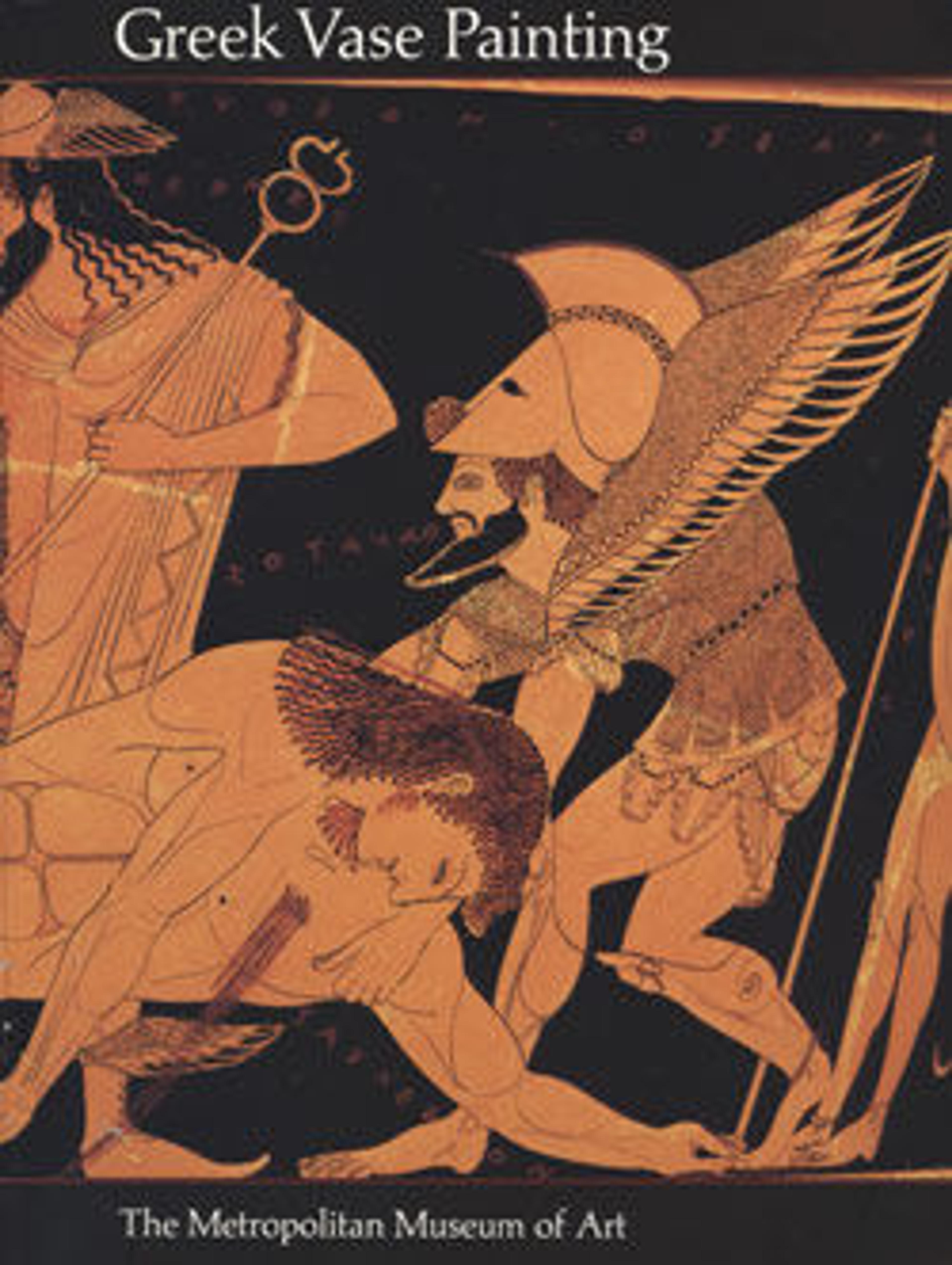Terracotta neck-amphora
The iconography of this vase is funerary, with a file of mourning women on the neck. The procession of chariots on the belly is complemented by heraldic lions on the shoulder. The painted decoration is enhanced by snakes added in clay. Snakes are traditionally associated with death because they can burrow under the ground and periodically shed their skin, a sign of renewal.
This neck-amphora belongs to a group of eight terracotta vases (10.210.1-.8) that are said to be from Athens. Despite the absence of archaeological record, they were probably found together in a tomb. Such groups are well attested in excavated burials. Moreover, the iconography of the two neck-amphorae, particularly the one with the mourning women on the neck, is appropriate for a funerary purpose. The group displays stylistic changes that occurred from about 730-700 BCE, a time of artistic innovation that resulted in the end of the formal precision of the Geometric style and the rise of the exuberant Protoattic style.
This neck-amphora belongs to a group of eight terracotta vases (10.210.1-.8) that are said to be from Athens. Despite the absence of archaeological record, they were probably found together in a tomb. Such groups are well attested in excavated burials. Moreover, the iconography of the two neck-amphorae, particularly the one with the mourning women on the neck, is appropriate for a funerary purpose. The group displays stylistic changes that occurred from about 730-700 BCE, a time of artistic innovation that resulted in the end of the formal precision of the Geometric style and the rise of the exuberant Protoattic style.
Artwork Details
- Title:Terracotta neck-amphora
- Period:Geometric/Early Protoattic
- Date:ca. 700 BCE
- Culture:Greek, Attic
- Medium:Terracotta
- Dimensions:H. 30 9/16 in. (77.7 cm)
- Classification:Vases
- Credit Line:Rogers Fund, 1910
- Object Number:10.210.8
- Curatorial Department: Greek and Roman Art
More Artwork
Research Resources
The Met provides unparalleled resources for research and welcomes an international community of students and scholars. The Met's Open Access API is where creators and researchers can connect to the The Met collection. Open Access data and public domain images are available for unrestricted commercial and noncommercial use without permission or fee.
To request images under copyright and other restrictions, please use this Image Request form.
Feedback
We continue to research and examine historical and cultural context for objects in The Met collection. If you have comments or questions about this object record, please contact us using the form below. The Museum looks forward to receiving your comments.
